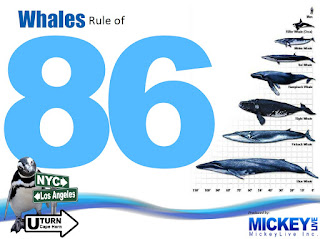When people hear that I went to Antarctica, many ask me "Did you set foot on land?"
Ok, most people who hear I went to Antarctica ask "Why?", but still, a number ask me if I set foot on land. I actually started pondering that question more than 15 years prior to this trip.
How important is it to set foot on land? (or more importantly, if you don't set foot on land, did you actually GO there?)
First of all, let's put this "set foot on land" thing to bed. Most people who go to Antarctica never leave the water. Think about it. Robert Scott was the first person to the South Pole. He got there January 17, 1912 and what does this picture show?
 |
| Photo from Mickey Live Presentation |
He isn't standing on land. It's water. Frozen water, but water just the same. Many (most?) visitors never get on land, they're just on water in some form. So, the answer to the question is "No. I didn't set foot on land".
That said, we would have LOVED to spend time on the ice pack, but there were laws in our way.
 |
| Typical Expedition Ship in the front - Our Ship in the Back |
Given the choice I made for transportation to the continent, I went to bat with three strikes. There was no chance of setting foot on the ice-pack when you go in our ship because the law is that people can only go ashore if the vessel contains less than 500 souls on board. Our ship probably had that many crew members so we were done before we started. Why then, did we choose to take the big boat?
Two reasons. First, look at the difference between the typical expedition ship (foreground) and our vessel. My little daughter gets sea-sick really easily and we knew the Drake crossing often has winds of over 100 mph and really big waves. We were told we might get into waves as tall as our ship. Imagine being in waves that tall in the foreground vessel! While on the voyage I learned that one year a wave that was taller than the ship broke over the top (14 stories tall). Imagine THAT in the foreground vessel.
The second reason was cost. Any way you slice it going to Antarctica is expensive. That said, not all trips down there cost the same. It cost a bit over $8,000 for a cabin on our ship. Passage on the expedition vessels run between $1,000 and $1,500 per person per day. Two of us were on-board for 15 days so on the smaller ship we would have paid between $30,000 and $45,000 for the same boat ride.
So the next question has to be "If you didn't set foot on land, have you actually been there?"
I probably answered that one when I was working on my life goal of visiting 49 US states. Since setting that goal I've been to 49 states, probably that many or more countries (perhaps I should count them). and all seven continents. Back when I formulated my 49 states goal I came up with a set of 5 rules that determine if I've "been there". Here are my rules:
- Crossing the border isn't enough.
Let's say you are driving from Nashville to Philadelphia (I've done that plenty of times). You will drive pretty much the full length of West Virginia's eastern border. Now let's say you make a 90 degree turn, cross the border, do a U-Turn and head back to Interstate 81. That's not good enough, following my rules you haven't been to West Virginia. This leads into rule 2.
- Leaving a state crossing a different boarder constitutes presence
(e.g. you HAVE been there).
Same trip as example 1. You drive through Knoxville TN, head up I81 then do the 90 degree turn on to I77, but this time rather than doing the U-Turn you just stay on I77 until you reach I64, turn right and drive back to I81. You can now add West Virginia to your list of states because you crossed the border in two different places.
An amusing side note - West Virginia was my last state (#49) and I actually drove from Nashville to Washington DC and failed to do the 77 to 64 thing which cost me a flight to West Virginia and a long weekend at a bed and breakfast to achieve my last state.
- An airport is not part of the state.
Stopping at an airport in a state isn't enough (I've flown all over the place and have had many connections but these don't count). The airports are not a destination, they are just airports.
I've been to the airport in Hong Kong but have never gone outside the airport it so I've never been to Hong Kong. The second time I had a lay-over in Barcelona, Spain I took a train into town, ate breakfast, took a train back to the airport, and caught my connecting flight to Cairo, Egypt. This leads us to the 4th rule:
- Eating a meal establishes presence.
Back to West Virginia. If you took I77, crossed the border, had lunch, did the U-Turn and headed back to 81 you can add West Virginia to your list.
I actually did the Barcelona breakfast trip solely to establish presence and add Spain to my countries.
- Spending the night establishes presence.
You drive I90 from Wyoming to South Dakota. You visit Mt Rushmore, spend the night in Rapid City and drive back to Wyoming (on the same road) the next day. Of course you've been to South Dakota. Spending the night establishes presence.
Interesting side note - The first time I had a lay-over in Barcelona it was 11 hours and I actually got a bed and spent the night at the airport. I decided that spending the night did not establish presence because the airport was not part of the country. This led to the train trip and meal on my second layover.
Ok, here's a test question to see if you have been paying attention. Is it possible to get a passport stamp from a country yet never go there? Leave me a comment with your answer!
To the best of my knowledge the US congress and United Nations have not yet adopted my five rules of travel to establish presence, but I have to assume this is an oversight on their part, and I digress.
When Mandy and I went to Antarctica we met the criteria of all 5 rules. Here's our path in Antarctica (actual path on actual nautical chart plotted by a member of the crew and certified by the ship's captain).
 |
| Actual course plotted on a nautical map |
Here's the big picture of the southern part of our voyage. The latitude line at the top is 60 south (the start of the south ocean which is how Mickey Live told us they define "being in" Antarctica.
 |
| Part of the Antarctic Peninsula we Visited |
Rule 1 and 2: The border where we entered the land portion of the Antarctic peninsula was through the Schollard Channel. The last land mass in we visited (the next day) was 560 miles away at Elephant Island. Rule 1 & 2 met.
Rule 3 is kind of moot. There are no airports in Antarctica.
Rule 4 was met multiple times. My first (and 2nd) meal in Antarctica were hot soup as I stood on the deck taking pictures. This guy came around with his little soup cart. Maybe the best soup on planet earth (14 hours without food and hot soup in sub zero weather probably had nothing to do with it).
 |
| Hot soup guy was a hero on deck |
Mandy and I also had a wonderful dinner by a big picture window with a glorious mountain view as we sailed up the Gerlache Straight.
Rule 5 was met because we entered the Schollard Channel between 6 a.m. and 7 a.m. on one day, spent the night, and left Antarctica the afternoon of the next day.
So...I didn't bring home any Antarctic rocks (and you KNOW I would have) and I didn't get to sleep in a tent on the ice pack (something that I included in an earlier $50,000 dollar trip plan) but following all of my rules of travel and presence...
WE HAVE BEEN TO ANTARCTICA!!





























/duckling-close-up-500315849-572917c93df78ced1f0b99ec.jpg)










